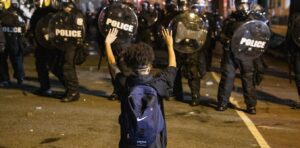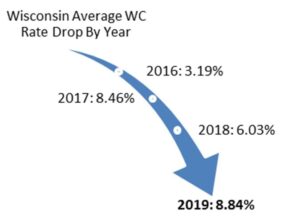Met police: Casey review shows how ‘warrior culture’ drives policing in the UK

The landmark Casey review has found the Metropolitan Police institutionally racist, misogynistic and homophobic. This language – “institutionally” – means that these are not problems isolated to a few bad apples, like David Carrick or Wayne Couzens.
These officers, and many others whose problematic conduct was known to colleagues, remained in post for years. This shows what policing researchers have argued for decades: that the barrel has been rotten for some time.
Police leaders including Sir Stephen House, Neil Basu and Dal Babu have demanded changes to police’s institutional culture in recent years. But to change the culture, we have to understand it.
One way researchers have understood the problems in policing is through the lens of “warrior culture”. This is characteristic of police institutions around the world, and the Casey review shows that the Met’s toxic atmosphere is no exception.
Warrior culture describes a police force with a military-like nature. It encourages repression, regards traditionally marginalised groups like poor people, ethnic minorities and LGBTQ+ people as enemies. It defaults to using aggression, violence and force, including deadly force, rather than de-escalation.
While it is only in recent years US academics have coined the term “warrior policing”, UK researchers have long discussed UK policing’s military approach and emphasis on social control.
This perspective rebuts the popular belief that UK policing has been primarily shaped by the Peelian policing principles attributed to the Met’s 19th-century founder, Sir Robert Peel. These include policing by consent, garnering public respect and approval, impartiality, service to the public and minimising the use of force.
With a warrior mindset, police are suspicious of the communities they serve, stereotyping them as lacking integrity, respect, and not valuing hard work. They place trust only in their fellow officers.
This culture creates an “us versus them” mindset, pitting officers against communities, and against other officers from minority backgrounds or who reject the warrior mindset. This is illustrated in the Casey review, in the numerous examples of racist alienation and bullying among officers, and the conclusion that minority ethnic staff “are viewed with suspicion and seen as outsiders”.
Detachment from the people they police means officers are less invested in community wellbeing, particularly of marginalised communities, and can more easily engage in aggressive policing tactics and violence. We see how embedded these biases are in UK policing, in the stops and searches and deaths in police custody that disproportionately affect people of colour.
My doctoral research found warrior culture often derided and devalued officers working in policing roles focused on community engagement and trust-building. Officers working in these areas told me their peers and supervisors often said their efforts were not “real” police work and not of value. Some officers I spoke with even reported being viewed with suspicion by police colleagues for interacting so closely with local communities.
Read more:
Casey review: key steps the Met police must take to address its institutional racism and sexism
The birth of warrior culture
In any policing organisation, there can be multiple cultures. Street officers, middle management and senior police leaders, for example, approach the job differently. But research suggests that the core of policing, and the most influential on a force’s overall behaviour, is street police culture, which researchers have long believed is grounded in a warrior model.
One reason that warrior culture has become so embedded in policing is that it can be seen as beneficial to officers. In theory, it creates camaraderie and a shared sense of values, enabling them to do what can often be a very difficult job.
Since its conception, the London Met’s culture was shaped by straight, white, working-class men, who made up a primary source of policing personnel. Traditional male conceptions of masculinity, sex, gender, race, aggression, physical strength and social control and interactions have influenced what is now institutionalised.
These norms are passed down from senior to more junior officers in the police academy and the field. They are reinforced on the job through performance metrics, supervisor evaluations and promotion decisions. It makes racism, misogyny and homophobia even harder to root out and challenge.
Guardians, not warriors
In the US, police leaders have called for an overhaul of the warrior model. Many argue that reducing police misconduct and brutality in the long term is only possible with a guardianship approach.
Police guardians are not adversaries of local communities. Instead of aggression, they focus on community engagement, building trust, positive community relations, conflict avoidance, de-escalation, and other peaceful means of policing.
Warrior culture.
Raymond Richards/Shutterstock
Some departments, like in Arizona, Minnesota and Washington have started to make these changes voluntarily. Others, such as Ferguson, Missouri and New Orleans, have done so under court-mandated consent decrees.
This model could serve UK policing well. Many officers across UK forces and in a variety of roles already reject the warrior approach and serve as police guardians in practice.
Officials I interviewed for my forthcoming book on police diversity say shifting to a guardianship model requires overhauling all aspects of policing, from recruitment and training, to disciplining and terminating officers.
But UK policing as a whole has not yet accepted the influence of police warrior culture and the way it drives violence. This must happen for meaningful shifts to guardianship policing to occur. Though long overdue, hopefully the Casey review is the impetus for this reckoning.






